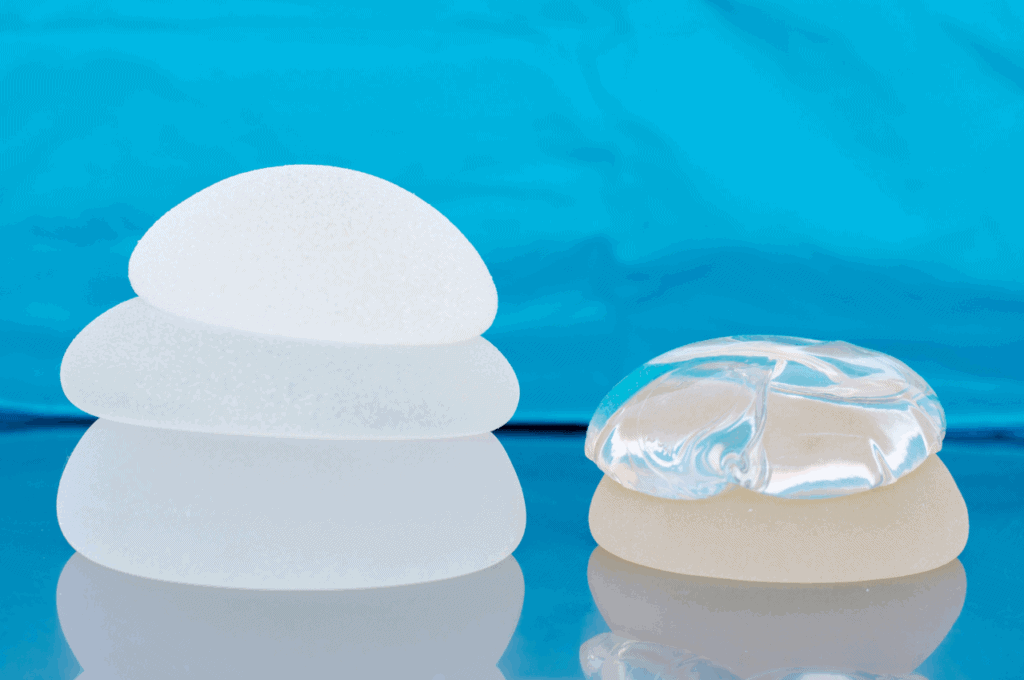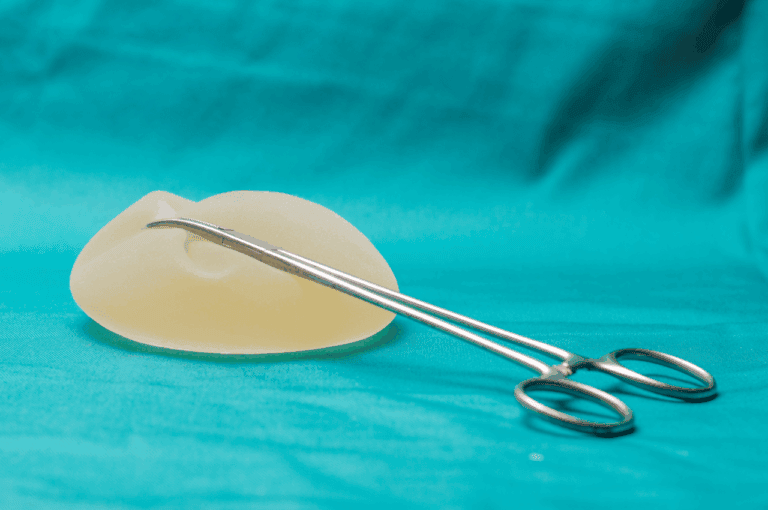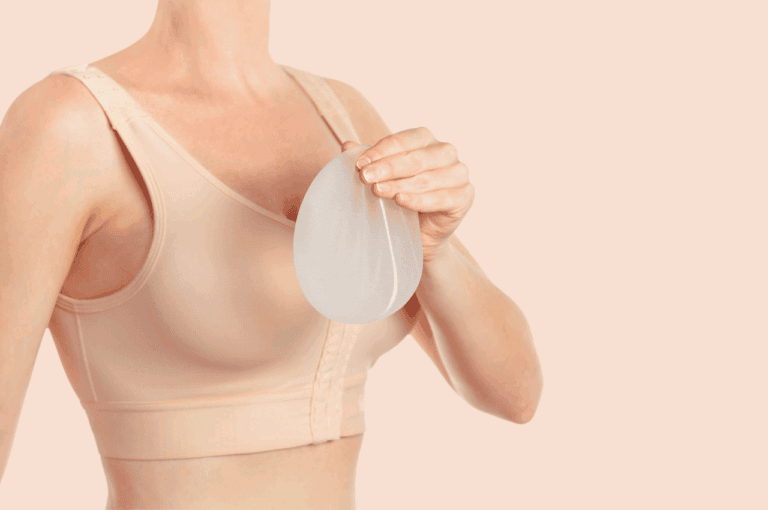Thinking about breast implant removal comes with questions, emotions, and important decisions. Whether you have saline or silicone implants, understanding your options can help you approach the process with clarity and confidence.
San Antonio Breast Implant Removal offers support and detailed information so you know what to expect throughout your journey. This article will walk you through the vital differences between saline and silicone implant removal and provide insights to help you make the best choices for your health and goals.
Let’s explore what you need to know about saline vs. silicone implant removal and how you can prepare for a safe, smooth experience.
Key Takeaways
- Implant Composition: Saline and silicone implants have different internal materials, which impact how surgeons approach removal.
- Reasons for Removal: People seek removal for discomfort, health concerns, implant complications, or personal preference.
- Removal Techniques: Surgical strategies differ for saline and silicone, especially if implants are ruptured or have developed scar tissue.
- Choosing a Surgeon: Selecting a board-certified plastic surgeon with removal experience is critical for safety and results.
- Recovery Expectations: Healing times and symptoms vary, but careful post-op care supports an easier recovery.
- Potential Complications: Both types of removal carry risks like infection, scarring, and altered breast appearance.
- Next Steps: Many patients consider fat transfer or new implants, and an expert consultation helps clarify options.

Understanding the Difference: Saline vs. Silicone Implants
Knowing the difference between saline and silicone implants helps you understand their removal process. Both types have unique properties that affect how surgeons handle them during extraction.
What Are Saline Implants?
Saline implants contain sterile saltwater inside a silicone outer shell. Surgeons typically insert them empty, then fill them after placement, allowing adjustments to size and symmetry.
What Are Silicone Implants?
Silicone implants are pre-filled with a cohesive silicone gel. This material is thicker than saline and tends to mimic natural breast tissue in texture and appearance.
Key Differences That Matter for Removal
The main point of distinction is their internal substance. This influences leakage risks, how the body reacts to implant rupture, and the difficulty of the removal procedure. Saline leaks usually absorb harmlessly into the body, but silicone leaks require careful handling to avoid leaving gel in the breast pocket.
When you consider removal, knowing your implant type guides your conversation with your surgeon.
Reasons People Choose Implant Removal
Several motivations prompt someone to have their breast implants removed. While every person’s story is unique, certain reasons remain common.
Aesthetic Changes or Dissatisfaction
Over time, you may feel that your implants no longer reflect your current tastes or lifestyle. Shifting trends and personal preferences often play a role in implant removal.
Health Concerns and Complications
Some people experience discomfort, chronic pain, or implant-related illnesses. Conditions such as capsular contracture, implant rupture, and infection can motivate removal. In rare cases, some patients seek removal due to symptoms of Breast Implant Illness (BII) or concern for Anaplastic Large Cell Lymphoma (BIA-ALCL).
Life Circumstances and Personal Goals
Pregnancy, weight fluctuations, aging, and athletic pursuits can also prompt the decision to remove implants. In other cases, people opt for implant removal after a recommendation from a medical professional.
Each person comes with a unique combination of these factors. Understanding your motivation helps your surgeon tailor the removal plan to your needs.

The Surgical Approaches: Saline vs. Silicone Implant Removal
There are important differences in the way surgeons approach saline and silicone implant removal. Your surgical experience will depend heavily on which type of implant you have.
Removal of Saline Implants
Saline implant removal usually begins with a small incisional approach. The surgeon may deflate the implant inside the breast before removing the empty shell. This method often leads to a shorter procedure and quicker recovery, especially if there are no complications like ruptures or significant scar tissue.
If the saline implant has ruptured, the body absorbs the leaked solution. However, the shell itself still needs to be carefully taken out. If a thick scar tissue capsule is present, the surgeon may remove it as well to restore normal shape and comfort.
Removal of Silicone Implants
Removing silicone implants is sometimes more complex. Since silicone gel can escape the implant, surgeons take extra precautions to avoid leaving any material behind. The incision may be larger or in a different location compared to the one used for insertion. If a rupture is present, the silicone gel could spread within the breast pocket, requiring careful cleaning and sometimes removal of surrounding tissue.
Capsulectomy, which is the removal of the scar tissue capsule, is common with silicone implants, especially if capsular contracture has occurred or if silicone gel has migrated. This step reduces the risk of leftover silicone or tissue hardening after removal. The technique may take longer and involve more post-operative care.
What to Expect: Steps of Implant Removal Surgery
You might wonder what exactly happens on the day of surgery. The following list summarizes the general steps, though your specific experience may differ based on your anatomy, implant type, and goals.
Here are the main stages most removal surgeries follow:
- Preoperative Preparation: Your surgeon reviews your medical history, takes exam measurements, and confirms your surgical plan. You receive instructions for fasting, medications, and what to bring to surgery.
- Anesthesia Administration: Most procedures use general anesthesia, but less complex removals may use local anesthesia with sedation. This keeps you comfortable and pain-free during surgery.
- Incision and Implant Removal: The surgeon makes incisions, often in the same places as the original breast procedure. For saline implants, they may deflate them before removal. Silicone implants generally require a more cautious approach, especially with potential ruptures.
- Capsulectomy or Capsulotomy: If the tissue capsule around the implant is problematic, the surgeon may remove it (capsulectomy) or release it (capsulotomy). This step is more common with silicone cases and for patients with significant scar tissue.
- Closure and Dressing: Incisions are closed with sutures, and the area is carefully bandaged. In some cases, drains might be used temporarily to prevent fluid buildup.
This general process ensures the surgeon safely removes the implants while addressing the surrounding tissue as needed. Recovery begins immediately after surgery under close supervision.
Candidacy and Consultation: Are You an Ideal Candidate?
Deciding to remove your breast implants involves more than a personal wish. A proper consultation helps you understand your risks, your eligibility, and what results you can expect.
Who Can Consider Implant Removal?
Most adults in good overall health are candidates. However, your medical history, presence of underlying conditions, and reasons for removal will all be carefully considered. Your plastic surgeon will discuss your goals and explain how factors such as skin elasticity and breast tissue volume affect the expected outcome.
Topics Covered in Your Consultation
During your first meeting, the following items usually come up:
- Your symptoms or concerns that prompt the desire for removal.
- The type and age of your implants.
- Surgical history, imaging (such as MRI or ultrasound if needed), and physical examination.
- Your considerations for breast aesthetics after removal, including the possible need for a lift or fat transfer.
- An honest discussion about risks, complications, and expected results.
This initial assessment builds the foundation for a safe procedure and helps set realistic goals as you consider your next steps.
What You Can Expect After Removal
Recovery from breast implant removal involves specific guidelines to support healing. Your experience can differ based on your implant type and the extent of surgery.
Immediate Postoperative Care
After surgery, you may feel sore, swollen, or bruised for several days. Most patients return home the same day, but some may need an overnight hospital stay, especially after complicated explants.
Typical Recovery Timeline
Here is what most patients experience during the healing process:
- First Few Days: Rest at home and avoid strenuous activity. Take prescribed pain medications if needed.
- First Week: Attend follow-up appointments. Begin gentle movement as directed. Monitor for signs of infection or unusual swelling.
- First Month: Gradually increase activity. Some patients return to work and driving within a week or two if their job is not physically demanding.
- Six Weeks and Beyond: Most restrictions lift, and exercise routines may resume. Swelling continues to improve, and scars begin to fade.
Throughout recovery, your surgeon will provide instructions and answer any concerns about healing, scar care, and breast shape changes.
Potential Risks and Complications
Though implant removal is routine for most surgeons, it does come with certain risks. Familiarizing yourself with complications allows you to make informed decisions and manage your expectations.
Common Risks
The most common risks include infection, bleeding, poor wound healing, or adverse reactions to anesthesia. Some patients may experience temporary numbness or changes in skin sensation.
Scarring and Breast Shape
Removing implants affects how the breasts look and feel. You may notice loose or sagging skin, volume loss, noticeable indentations, or asymmetry, especially if the original implants were large. A breast lift or fat grafting may be options, either at the time of removal or later, to restore a younger looking appearance.
Capsular Contracture and Residual Symptoms
If you had capsular contracture or other implant-related symptoms, these may persist for a time after removal. Your surgeon will discuss the likelihood of complete symptom relief depending on your situation.
Understanding these risks helps you prepare both mentally and physically for the changes following implant removal.
Options After Removal
After implant removal, you might wish to restore volume or improve breast contour. Several options are available for patients who do not want to return to their pre-implant appearance.
Fat Transfer
One alternative is fat grafting. Surgeons can harvest fat through liposuction from other areas of your body and graft it to the breasts. This method provides a subtle and natural increase in size and contour for many patients.
Breast Lift
If you experience significant sagging after removal, a breast lift (mastopexy) may reshape your breasts. Surgeons remove excess skin and reposition tissue to improve firmness and position.
Considering New Implants
Some patients opt for new implants, often choosing a smaller size, a different material, or a new shape. Your surgeon will explain whether your tissues support this option right away or if you should delay a replacement procedure.
These choices give you flexibility to achieve the look and feel you want after implant removal.
Choosing the Right Surgeon
Selecting the best surgeon for your breast implant removal is one of the most important steps in your journey. Look for board certification from organizations like the American Board of Plastic Surgery. Experience with both saline and silicone removals ensures the surgeon handles complex cases safely.
Attributes of a Qualified Surgeon
- Strong, proven history with a variety of explant procedures.
- Willingness to provide before-and-after photos and clear patient testimonials.
- Good communication skills and a supportive, patient-first approach.
- Readiness to discuss techniques for both implant types and address possible complications.
Meet with more than one specialist if you want reassurance about your options and outcomes. Your comfort and trust in your surgeon matter just as much as technical skill.
Making Your Decision
Removing your breast implants is a highly personal decision that can significantly affect your body confidence, physical comfort, and overall well-being. By understanding the key differences between saline and silicone implant removal, you arm yourself with vital information for navigating this process.
As you weigh your choices, align your motivations and goals with the expertise of a trusted, board-certified plastic surgeon. Take time to consider the recovery process, potential risks, and next steps, whether you opt for a lift, fat transfer, or simply return to your natural shape.
If you are ready to explore implant removal or have questions unique to your situation, reach out to San Antonio Breast Implant Removal for an informative consultation. The right support will guide you toward results that truly fit your needs and lifestyle.







